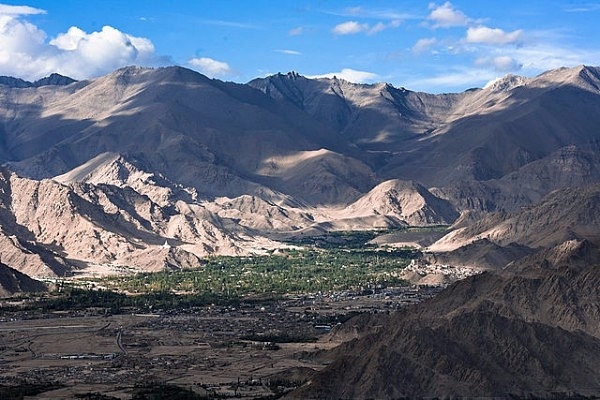
Explained: How Jal Jeevan Mission Brought Piped Drinking Water To Stok Village In Ladakh At -30°C Temperature
Recently, Texas in United States witnessed a severe snow storm that left hundreds of people without water for over two weeks. The storm led to the bursting of countless water pipes along the way due to the temperature drop.
A similarly acute challenge of water scarcity is an everyday occurrence for people living in Ladakh where the temperature reaches below minus 30°C in winters.
Situated at around 3,000 m elevation from the sea-level, Ladakh faces the problems of pipes blocked by ice in winters, leaving a large chunk of population without water.
All this is set to change with the Jal Jeevan Mission. The Stok village in Ladakh has become a poster boy for the success of the mission.
Today, the village with over 400 households, spread across 7 km, boasts of reliable water supply in even in the harsh winter months - and in a matter of months.
The central government started work for the Jal Jeevan Mission in Ladakh in September 2020. In November 2020, a multidisciplinary team comprising of officials of the ministry and experts visited the Stok village, situated at an altitude of 3,500 metres.
The team interacted with the local community including Sarpanch, members of Village Water & Sanitation Committee (VWSC) along with officials of Public Health Engineering Department.
The village had 35 tubewells, however, they remained dysfunctional in winters. An added challenge was increasing demand for water given scattered households with agricultural land and livestock.
The team took into consideration these and various other factors including the geography of the village, the availability of ground water and surface water, etc. and decided to apply the “infiltration gallery” technique for continuous water supply.
Using this technique, sub-surface water that remains unfrozen below the ice is tapped. This water is brought to an overhead tank, passing through a filter to discard impurities, and heated. Solar power is used for the purpose. This water, then, at a suitable temperature is supplied on a predefined schedule to avoid its freezing.
Additionally, pipes are laid three to four feet below the ground to protect the water pipes from freezing and bursting. Insulated pipes are used to prevent them from cooling too quickly
Quality, not just quantity
Apart from this, water testing laboratories are also being set up, and integrated with the mission. They are open to the general public for testing of their water samples on nominal charge.
Training is give to the Gram Panchayat (or VWSC, Paani Samiti) to test water using kits, and data is uploaded concurrently to ensure the potability of water.
The mission ensures supply of kits to the community, identification of at least five persons preferably women in every village (like ASHA and Anganwadi workers, school teachers, VWSC, Paani Samiti members, etc.) and training them for Field Test Kit use so that water supplied in villages could be tested locally.
The goal is to put in place a reliable and trustworthy arrangement of potable water supply.
The goal of Jal Jeevan Mission is to provide 55 litres of water per person per day to every rural household through Functional Household Tap Connections by 2024. In Ladakh, the mission has set a budget of Rs 362 crore, and a deadline of 2022.